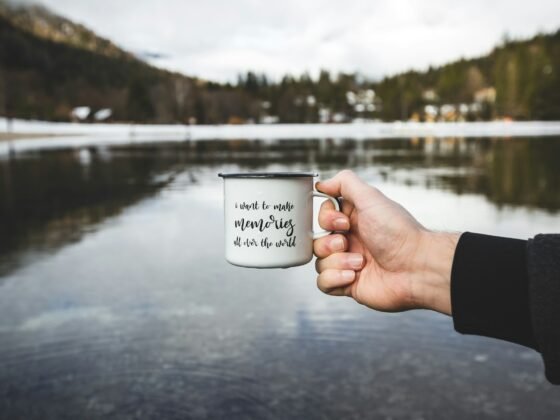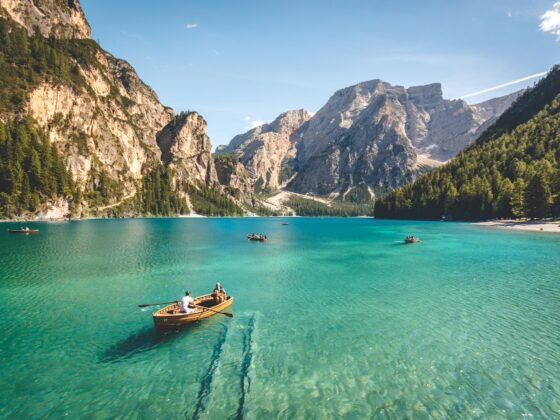
Ready to strap on your boots and hit the trail? Before you do, it’s important to understand the potential dangers and situations that can arise when you’re out hiking. It’s common sense to check the weather in the morning and pack a water bottle, but besides packing the Ten Essentials, such as a headlamp and plenty of water to stay hydrated, there’s a lot more to staying safe. Here are 11 essential hiking safety tips you need to know to make your trail a comfortable and safe one.
#1 Always Hike with a Friend or Group
Try to go hiking with a friend or a group. Not only can a few people help to divide up and carry part of the load, such as lunches in a waterproof cooler backpack, but having a hiking companion can assist in emergencies, too. Should a hiker sprain their ankle on the trail, they have someone to lean on. And if it’s a severe injury, they have someone to get help. Make sure everyone hiking understands the emergency plan and itinerary and be sure to carry a first aid kit, smartphones and GPS locators in a protective case.
#2 Let Someone Know Your Plans
Let a friend or family member who isn’t hiking with you know your itinerary. Give them all the details they need, such as when you start out on the trail, where you are going and when you plan to arrive back home. Give the name of the trail and the route you plan to take as well. This way, if you don’t return in time, they know to send for help. You can even give this info to a park office, too.
#3 Have an Emergency Plan
Create an emergency plan with the hiking group or friend accompanying you. What should be included in your emergency plan? For starters, everyone should have charged cell phones and a backup charger to call for help. However, since cell service may be limited in hiking areas, make sure someone brings a personal locator beacon.
#4 Plan for Bad Weather
You need to do more than check the weather before a hike. One essential hiking safety tip is to be aware of the region’s unpredictable weather patterns like nasty storms and lightning. In a lightning storm, the National Park Service recommends avoiding high, open areas, such as boulders, fields, trees, bodies of water and, of course, anything metal.
#5 Invest in a Good Pair of Hiking Boots
Before you even set foot on a trail, you should get yourself a decent pair of hiking boots. And not just boots, but socks, too! It’s critical for your hiking boots to fit properly, ensuring you avoid injuries like rolling an ankle or worse. So head to a local outdoor recreation store and test out boots until you find the best pair for your feet. Also, whatever you do, avoid moisture-retaining cotton socks. Aim for something more moisture-wicking, such as wool.
#6 Be Mindful of the Sun
When planning your hike, try to avoid peak hours of the sun and the hottest part of the day. Instead, set out in the early morning or later in the day. If you can, aim for shady areas, too. Furthermore, when it comes to your skin, apply plenty of sunscreen or wear clothing made with natural SPF. Be sure to wear sunglasses and a broad-brimmed hat to protect your face and head from the sun, too. Above all, recognize signs of dehydration and heat illnesses like sunstroke. Headache, dizziness, nausea and confusion are clear signs you should take a break and drink water.
#7 Carry a Water Purification System
While you should always bring bottled water or a hydration pack on a hike, it can’t hurt to pack a water purification system, too. Should you become lost or injured, having a way to filter and purify a natural water source like a creek could save your life. Always carry a topographical map so you can find natural water sources, too. If you are on a long hike, a purification system can also lighten the load.
#8 Stay on the Trail
While this seems like a no-brainer, it’s easy to forget, especially once you are enjoying yourself and admiring the surrounding nature. However, trails were created for a reason. Often, there could be a dangerous cliff or simply thick brush where you can quickly lose your bearings. So whatever you do, never veer off the trail. Furthermore, going off-trail or imparting on a “social trail” is harmful to the environment and negates one of the Leave No Trace principles.
#9 Be Extra Cautious on the Second Half
As with any activity, your body can begin to tire after a while. Unfortunately, it’s usually during the second half of a hike when many hikers experience accidents such as falls, trips and more. With lower energy levels and fatigued muscles, it’s important to be extra cautious and observe your footing.
#10 Seek Expert Advice
Whether you take advice from a hiking book or a park ranger, it’s always good to get insider info about a trail. Rangers are always highly knowledgeable and happy to assist hikers in getting to their destination safely and securely. Plus, you really should stop by the office before setting out on the trail, giving them your itinerary. The park departments can also provide you with advice on how to best protect the lands and avoid things like mudslides, bear territory and more.
#11 Remember: It’s Okay to Turn Back
Even if there’s a summit or a picturesque view at the end of your hike, it’s okay to call it quits and turn back. Be honest with yourself and listen to your body. If you or a fellow hiker is exhausted or simply has an unexpected storm approaching, don’t be too proud to call it quits and turn back. Overall, learn to be flexible on the trail, trust your gut and head back to play it safe whenever you need.












